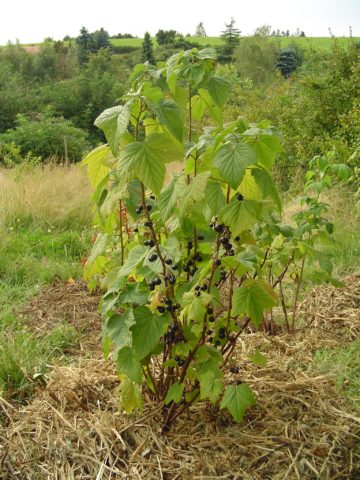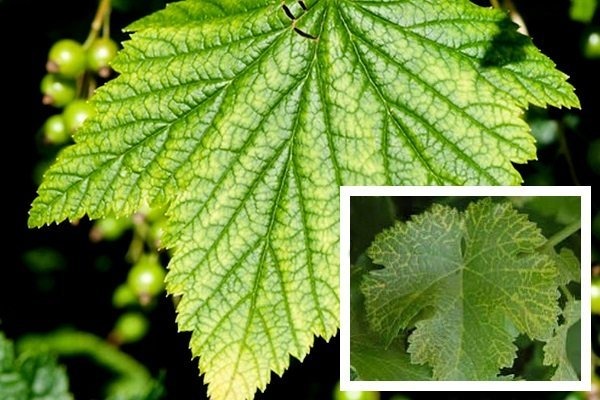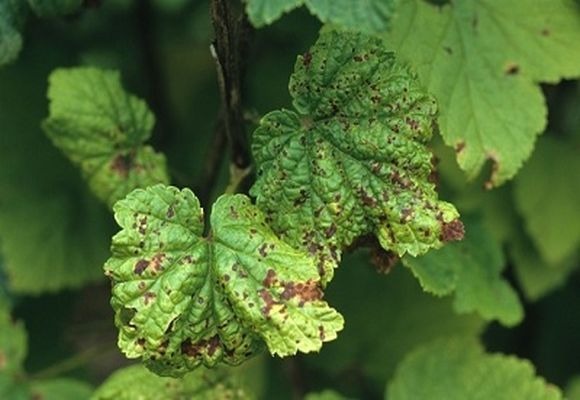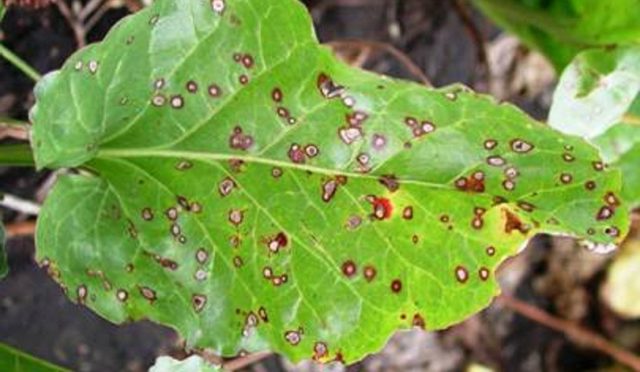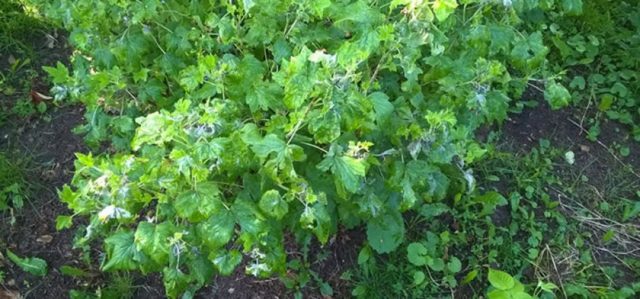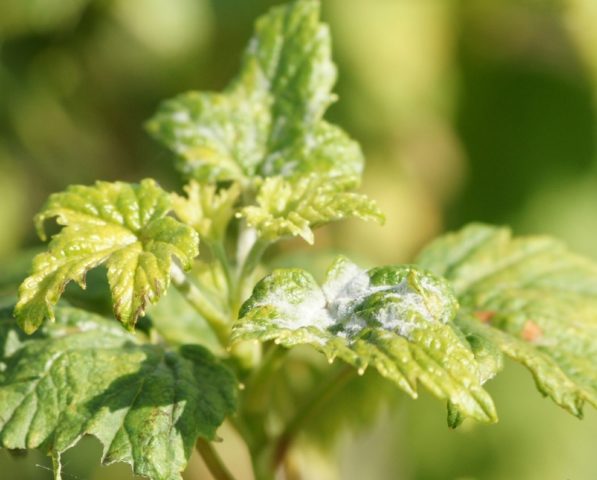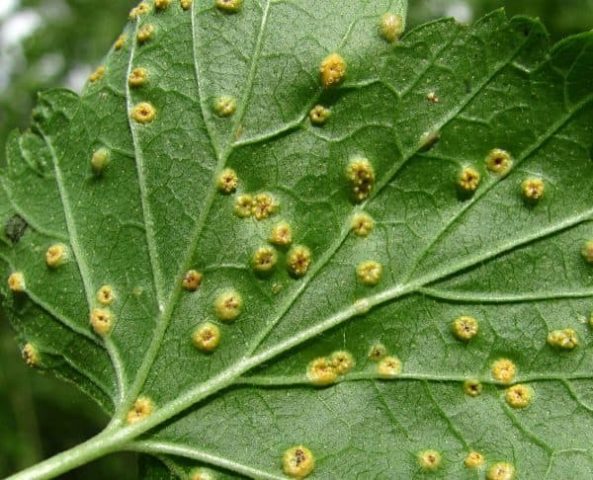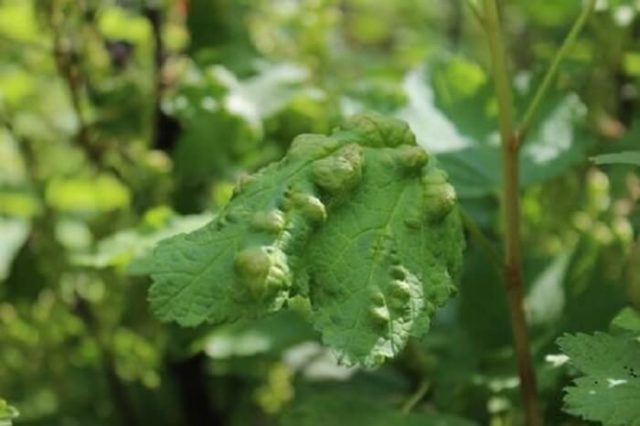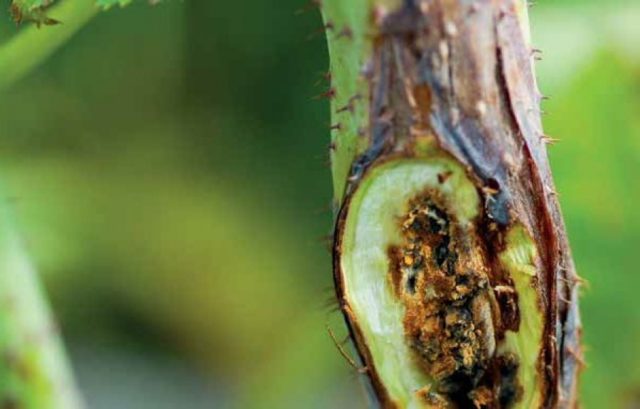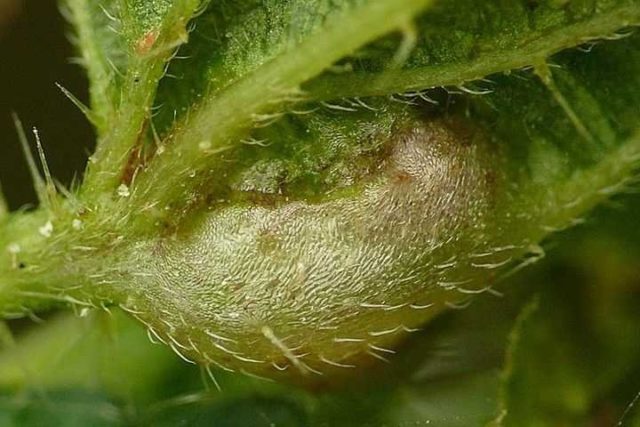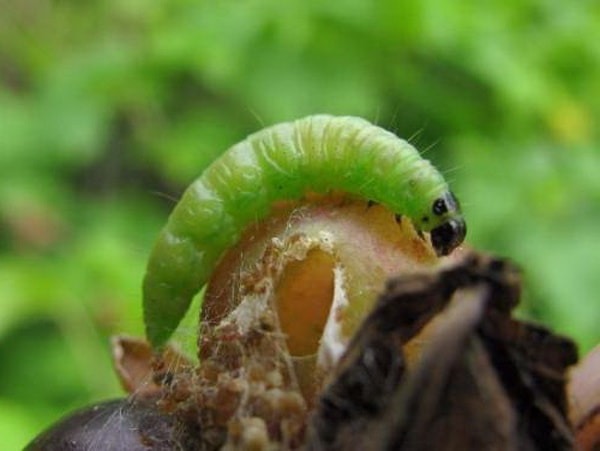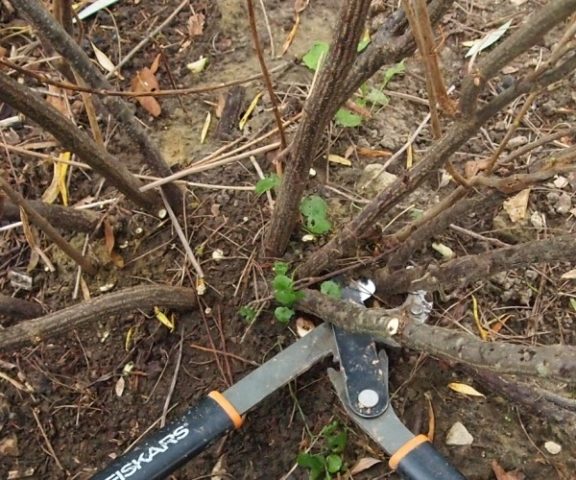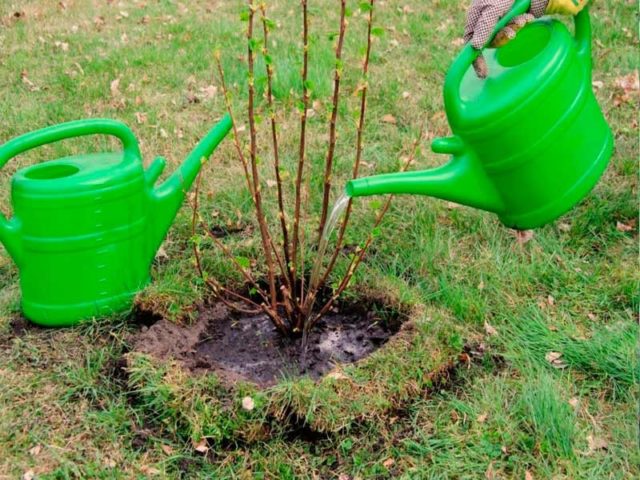A well-groomed and healthy currant bush, as a rule, is not very vulnerable to pests and ailments, regularly pleases with a beautiful appearance and a rich harvest. If the gardener noticed that currant leaves wither, turn yellow and dry on his site, fruit-bearing branches deteriorate and break, berries shrivel, then you need to figure out why this is happening. Errors made during planting or further care, unfavorable climate, mechanical injuries to the plant can weaken it and cause damage to diseases or parasites. It is important to understand that you can lose not only a significant part of the crop, but also the entire bush, if you do not take measures to eliminate the problem as soon as possible.
Why currants dry
The reasons why currant branches, leaves and even fruits dry out may be different:
- unfavorable environmental conditions (poorly chosen planting site, unsuitable mineral composition of the soil, dry summers or, on the contrary, prolonged rains);
- care errors (insufficient or excessive watering, improper fertilizing, no or insufficient attention is paid to mulching the soil, pruning shoots, preventing diseases and pests);
- currant diseases;
- activity of insect pests.
Unfavorable climatic conditions
If the place for planting the currant bush was initially determined incorrectly, the plant will weaken, dry out and eventually may die.
Allocating a plot for currants in the garden, you should be extremely careful about all its preferences:
- the landing site should have adequate sunlight, although some shading is possible, and be protected from strong gusts of wind;
- the soil (ideally - sod-podzolic or loam) needs well-drained, with normal acidity and the absence of stagnant water;
- the groundwater level should not be higher than 1 m in order to avoid rotting of the plant roots.
It often happens that currant leaves dry out en masse in a dry hot summer, when there is no rain for a long time. During this period, additional watering should be provided so that the plants receive the required amount of moisture. It will be enough to water the currants once a week, spending 1.5-2 buckets of cold water that has settled during the day per bush. Additionally, you can shade the bushes on the south side with the help of homemade shields made of dense fabric stretched over the supports, this will protect the leaves from the scorching sun.
Excessive moisture will also harm the currants. A prolonged period of rains may well lead to the fact that, due to an excess of water in the near-trunk circles, the young roots of the plant will begin to rot and die off. As a result, the currant weakens, the leaves begin to turn yellow and dry. In this case, you can improve the outflow of water from the roots by digging additional grooves around the bushes at a distance of about 60 cm. They should be filled up when the rains stop.
If the soil on which the currant grows contains insufficient nutrients, the leaves of the plant also turn yellow, and then wither and dry.
The lack of certain micronutrients can be expressed as follows:
Trace element | Signs of its deficiency |
Potassium | The edges of the currant leaves darken, dry and crumble, while the middle of the plate remains intact. |
Calcium | The upper part of the leaf darkens, becomes crimson, the lower part loses color and dries. |
Iron | The leaf turns yellow, the edges of the plate dry and die off. |
Boron | The main veins on the leaf blades acquire a yellow color. The tips of the leaves dry and crumble. |
Manganese | Dry areas of gray appear on the surface of the leaves. |
A properly organized feeding regime will help to solve the problem.
Improper care
In the event that there are no complaints about the area in the garden where the currants grow, the reasons that the leaves on the bushes dry, turn yellow and wither may lie in violation of the rules of planting and care.
A young plant purchased for planting on a site should have the following characteristics:
- absence of injuries, damage;
- the presence of 4-6 strong shoots;
- developed root system.
When planting a currant bush in the ground, all shoots should be cut shortly, giving the plant the opportunity to direct its forces to the growth and development of new high-quality shoots. If this is not done, a large number of formed leaves can destroy the young seedling. The green mass of the bush will begin to turn yellow and dry with whole shoots.
It is undesirable to plant currants next to large fruit trees, they shade the shrub from the sun, and their roots draw nutrients from the soil. Another unwanted "neighbor" is gooseberries. He suffers from the same diseases and pests as currants.
It must be remembered that currants, especially black currants, are very demanding on the degree of moisture in the soil and air. Even in years when severe drought and prolonged rains are not observed, by the time the fruits ripen, the natural supply of the plant with moisture is usually not enough. This is manifested in the fact that the yield of the bushes decreases, the currant berries become smaller and dry, they form a dense thick skin and relatively little pulp.
In years without noticeable weather "whims" currants are watered about 4-5 times:
- in June, when the ovaries are formed - 1 time;
- in July, at the stage of berry ripening, - 2 times;
- in August, when the harvest has already been harvested - 1 time;
- in September - 1 time.
It is preferable to organize irrigation by furrows or by sprinkling, adhering to the norm of 4-5 buckets per 1 sq. m.
It is recommended to feed the currants annually with potash, nitrogen and phosphorus fertilizers. If the acidity of the soil rises, lime should be added to it.
From the first year of life of currants, formative pruning must be carried out. Branches that are dry, damaged, or sore are usually excised in the spring. Weak, excess shoots thickening the bush are removed in the fall. A healthy adult blackcurrant bush should have 15-20 branches that are no more than 5 years old. After reaching 5 years old black and 8 years old red and white currants regularly prune old shoots in order to rejuvenate the plant.
Incorrectly executed or not carried out at all currant pruning will lead to the fact that within several years the bush will become so thick that the fruit-bearing branches will not have enough food, free space and light. The plant will weaken, begin to dry, and become vulnerable to pests and diseases.
In addition, periodic loosening of the soil in the near-trunk circles, regular weeding of weeds, as well as inspection of plants and carrying out preventive treatment against diseases and parasitic insects will be the key to the health of the currants.
Diseases
Very often, currant leaves, shoots and even berries dry out as a result of the plant suffering from a disease caused by a virus or fungal spores.
Striped (veined) mosaic
Dangerous viral disease of the currant. It is carried by ticks and gall aphids. Rarely, infected grafting material can become a source of plant infection. A characteristic feature of this mosaic is the appearance of light yellow or orange stripes along the main veins on the leaf blades. The bush is weakening, its yield drops sharply. Gradually, yellowness spreads over the entire surface of the leaves, they dry out and die off.
Re-planting currants in place of uprooted bushes can be no earlier than 5 years later.
Anthracnose
The popular name for this fungal disease is "muhosed". It appears on young shoots, leaf blades and cuttings. The surface of the infected organ of the currant is covered with small brown specks with tubercles, which over time begin to merge, affecting an ever larger area. Leaves curl, dry and crumble prematurely.
Prolonged rains or frequent fogs contribute to the spread of anthracnose.
Cercosporosis
The source of cercosporosis is fallen leaves affected by the disease. Otherwise, this disease is called "brown spot". In the middle of summer, spots of dark brown or chestnut color appear on the leaves of currants with a thin light border along the edge. Small specks gradually grow, a dark velvety bloom grows in their places on the underside of the leaf plate (spores of the causative agent of the disease - fungus). If the lesion is severe, the leaves dry quickly and fall off.
Powdery mildew
Two types of powdery mildew are widely known:
- American, or spheroteka. Affects mainly black currants. Both old leaves and the tops of young shoots, ovaries, berries in early summer are densely covered with a gray-white powdery texture. Gradually, it takes on a brown color and becomes like felt. Infected leaves dry quickly and fall off, the shoots are bent, and the berries lose their taste and presentation, becoming unfit for food.
- European. This variety is not as widespread as the previous one, but if young branches with berries dry on red currants or gooseberries, it may well be the culprit. Initially, on the affected organs of the plant, you can see a loose white bloom, similar to a thin cobweb. Gradually, it thickens and darkens, forming a rough brown crust. The leaves rapidly turn yellow, curl and dry, the shoots are deformed and die off, and the berries crack and crumble before they have matured.
Tuberculariosis
In another way, this fungal infection is known as "drying out of branches". During the flowering period of currants, small red dots appear on the bark or the back of the leaves, which eventually grow into convex tubercles of a darker color. After the spores of the fungus mature, the damaged leaves and areas of the bark turn black and dry rapidly.
Rust
There are two types of this fungal disease that affect currants:
- Columnar rust. It usually appears in early August on both sides of the leaf plate: numerous yellow or orange specks appear on top; the lower part is covered with brown growths - tiny "columns" in which the spores of the fungus mature.Diseased leaves dry and crumble en masse, the growth of shoots slows down, the plant weakens.
- Goblet rust. It can be found during the flowering period of currants. On the back of the leaves, as well as on flowers and ovaries, bulging yellow-brown pads appear, similar to "goblets" or warts, inside which spores are contained - a fine brown powder. The yield of the diseased plant drops sharply, the affected organs turn yellow, dry and die off.
Pests
If the leaves, shoots and fruits of currants dry out, the activity of a number of parasitic insects may well be the cause.
Gall aphid
Small (up to 2 mm) insects of a pale green color, feeding on the sap of the leaves. They settle in the spring on red and white, a little less often on black currants. The peak of their harmfulness occurs in June. Some of the female gall aphids, the "settler", have wings and are able to quickly move from bush to bush when the affected plant is no longer able to feed the expanded colony.
Initially, characteristic yellow or dark red bumpy growths, "tumors" appear on the leaves. Then the leaf blades turn yellow, deform, dry and die off. Often, even after the destruction of aphids, young shoots of currants continue to lag behind in growth and development, much less berries are tied on them.
Spider mite
This microscopic pest is extremely dangerous not only for currants, but also for other berry plants. Initially, round light dots appear on the leaf blades, which gradually grow into large, colorless spots. If the degree of damage is great, the leaves become "marble", dry quickly and fly around. The presence of this type of mite is indicated by a thin white cobweb on the back of the plate.
Currant glass
A small, dark fly, somewhat reminiscent of a wasp, with transparent wings and three transverse yellow stripes on the body. It affects all types of currants after flowering, laying eggs under the bark of the plant in places of cracks and damage. Having hatched, the caterpillars eat up the passages inside the shoots, feeding on their soft core. In the first season, the damage is not particularly noticeable, however, the leaves and berries on such branches become smaller. But next spring, during the period of leaf blooming, it becomes obvious which shoots are affected, they wither and dry out. When such branches are removed, a longitudinal dark cavity can be seen at the cut site, often with excrement of larvae.
You can imagine what the larva of a currant glassware looks like, see exactly how the shoots affected by it dry and get some useful tips on combating this pest by reading the plot:
Gall midges
Gall midges, small (up to 5 mm) winged insects of yellow-brown color, outwardly resembling a mosquito, cause significant harm to currants, mainly black. Two of their types are especially common:
- Shoot gall midge. As a result of the activity of the larvae of this pest under the bark of the plant, the shoots, which initially looked healthy, suddenly begin to dry and easily break off. Just below the dry area, you can see a depression and darkening of the bark.
- Leafy gall midge. Damages mainly tops of young shoots. Such leaves are deformed, torn, look "wrinkled", quickly turn brown and dry. Having unfolded the affected plate, you can often see a white or yellowish larva inside.
Gooseberry moth
This small (up to 1.5 cm) gray-brown butterfly parasitizes red and black currants. The moth hibernates in the ground next to bushes.In the spring, she gets out, laying eggs in flowers and currant ovaries. Its larvae are 16-legged caterpillars of a pale green color, which eventually darkens to gray, with a black head and chest plate. They bite into the ovary, feed on juice and seeds of berries. Due to this, currant fruits acquire a bright color too early, quickly darken and dry. They are surrounded by a thick layer of cobweb, in which the excrement of the larvae is clearly visible.
What to do if the currant dries
Having identified a disease due to which currant leaves dry, the fight against it should be started as soon as possible. The sooner the necessary measures are taken, the more chances there will be to save the diseased plant, if possible, and minimize the negative consequences both for planting currants and for the rest of the orchard.
Disease due to which currants dry | Control measures | ||
Chemical / biological products | Folk remedies | Agricultural techniques | |
Striped (veined) mosaic | Cannot be cured. The infected plant must be uprooted and burned. | ||
Anthracnose | Processing of currants before bud break, after flowering, after 10 days, after picking berries with Bordeaux liquid (1%). Spraying before bud break and after leaf fall with Nitrofen (3%) | Ineffective | Collect and burn diseased currant leaves. In the fall, dig up the soil in the tree trunk circles |
Cercosporosis | Spraying currants after flowering, after 10 days, after picking berries with Bordeaux liquid (1%) | Ineffective | Destroy fallen leaves. Treat the soil with Bordeaux liquid. Avoid stagnant moisture under the currant bushes. Enrich the soil with microelements (zinc, copper, manganese, boron) |
Powdery mildew | Before flowering currants and after picking berries - Topsin-M, Fundazol, Skor, Raek, Acrobat, Topaz | Spray plant leaves with aqueous solutions of rapeseed oil (1%), soda and laundry soap, infusion of wood ash | Remove diseased leaves, ovaries, plant shoots. Rinse the bush under running water from a hose. Change the top layer of soil under a diseased plant |
Tuberculariosis | Before flowering currants - Bordeaux mixture (1%) or copper oxychloride (0.4%). 10 days after picking berries - Topsin-M, Kaptanol, Hometsin | Ineffective | Trim to the base and burn the dry currant branches. Treat the cuts with garden pitch. Avoid mechanical damage to the plant |
Rust (columnar, goblet) | At the stage of unblown buds - Bordeaux liquid (3%). 3-4 spraying of the plant with Bordeaux liquid (1%) is possible: when the leaves bloom, when buds appear, at the end of flowering. At the last stage, if necessary, carry out the treatment twice with an interval of 10 days. At the stage of blossoming leaves - Fitodoctor, Fitosporin | Process currant leaves with a solution of soda with the addition of liquid soap, infusion of garlic, tobacco dust, a mixture of kefir or milk whey with warm water (1:10) | Cut and destroy affected leaves, shoots. Drain the soil under the bush, fertilize later |
The same goes for parasitic insects:
A pest due to which currants dry | Control measures | ||
Chemical / biological products | Folk remedies | Agricultural techniques | |
Gall aphid | Bitoxibacillin, Avertin, Aktofit. At the stage of bud opening and after harvesting berries - Actellik, Calypso, Proteus Confidor Maxi | Spray currant leaves throughout the season, excluding periods of flowering and harvesting, with tincture of garlic or wormwood with the addition of liquid soap; infusion of marigolds | Before the appearance of the leaf mass, pour the currant bushes with hot (60-70 ° C) water |
Spider mite | At the stage of bud opening and with severe damage - on the eve of currant flowering: Zolon, Fitoverm, Akarin, Antio, colloidal sulfur | Process currant leaves with infusion of onion and garlic, potato tops, wormwood, dandelion, celandine, calendula | Increase of humidity by constant irrigation of currant leaves with water. Cover the bushes for a while after watering with plastic wrap |
Currant glass | As soon as the first leaves of the currant bloom, upon detection of caterpillars - Fitoverm, Aktara, Iskra Double effect. Repeatedly - in 10-14 days | During the summer of butterflies, process the leaves with an infusion of garlic, onion husks, needles, tansy, wormwood | Cut the diseased branches of the plant to the level of the soil and burn. Plant some marigolds, calendula, nasturtium in the aisles of currants. Plant an elderberry bush nearby |
Gall midges | During the period of bud formation - Kinmix, Aktellik, Kemifos, Bitoxibacillin. During the growing season - Fitoverm | Before flowering currants, after it and at the stage of picking berries, process the leaves with infusion of garlic, yarrow, walnut shells, ash | Cut off and destroy the affected shoots of the plant. Mulch the soil with fine peat. During the period of emergence of adults from the soil, lay out pieces of film, pieces of cardboard, roofing material under the currant bushes. |
Gooseberry moth | Before flowering currants - Iskra-M, Kinmiks. After flowering - Fufanon, Aktellik, Karbofos. During the ripening period of berries - only biological products: Iskra-Bio, Fitoverm, Lepidocid, Bitoxibacillin | On the 5-6th day of flowering of the plant, treat the leaves with an infusion of chamomile. During the ripening period of berries - infusion of tobacco dust, mustard powder, wood ash | Cut and burn damaged bunches and berries of currants. During the summer of butterflies, use light traps (sheets of bright yellow cardboard, smeared with glue, place next to bushes and near lanterns) |
Preventive actions
In order for the branches, leaves, flowers and berries of currants not to dry out, it is necessary to take care of the health of the plant throughout the year, to create favorable conditions for its development and growth, to minimize the likelihood of disease or damage by pests.
This can be ensured by a set of preventive measures:
- the right place for planting currants;
- using healthy and strong seedlings;
- regular inspection of the plant to identify leaves, shoots, flowers, ovaries, fruits that dry out or get sick;
- annual autumn pruning of weak, dry and damaged currant branches, thinning thickening shoots, timely rejuvenation of the bush;
- disinfection of cut sites with garden pitch;
- weed control near currants;
- in spring and autumn - digging the earth in the near-stem circle of the plant;
- collection and destruction of fallen leaves;
- regular watering of the plant, avoiding both excessive dryness of the soil and stagnation of moisture at the roots;
- timely application of dressings (in early spring - nitrogen fertilizers, in summer - potash and phosphorus compositions, in autumn - mostly organic);
- in early spring, twice - before bud break and before flowering - carry out the obligatory treatment of currant bushes and the soil under them with a solution of karbofos or nitrophene (2%).
Conclusion
Noticing that currant leaves dry on the site, young and old branches die off or berries deteriorate, the gardener should not ignore these alarming symptoms. If measures to identify the cause of the trouble and its elimination are not taken in time, you can lose the crop, destroy the plant, and in the worst case, prevent the spread of a dangerous infection or pest throughout the orchard. At the same time, the correct choice of the planting site for the bush and competent care for it, including preventive actions aimed at protecting currants from diseases and pests, will allow the plant to grow and develop successfully, increasing healthy green mass and delighting with generous harvests.
